VW ID.5 GTX review: an ideal family EV
The VW electric SUV looks like a large hatchback and is a sensible choice for family buyers

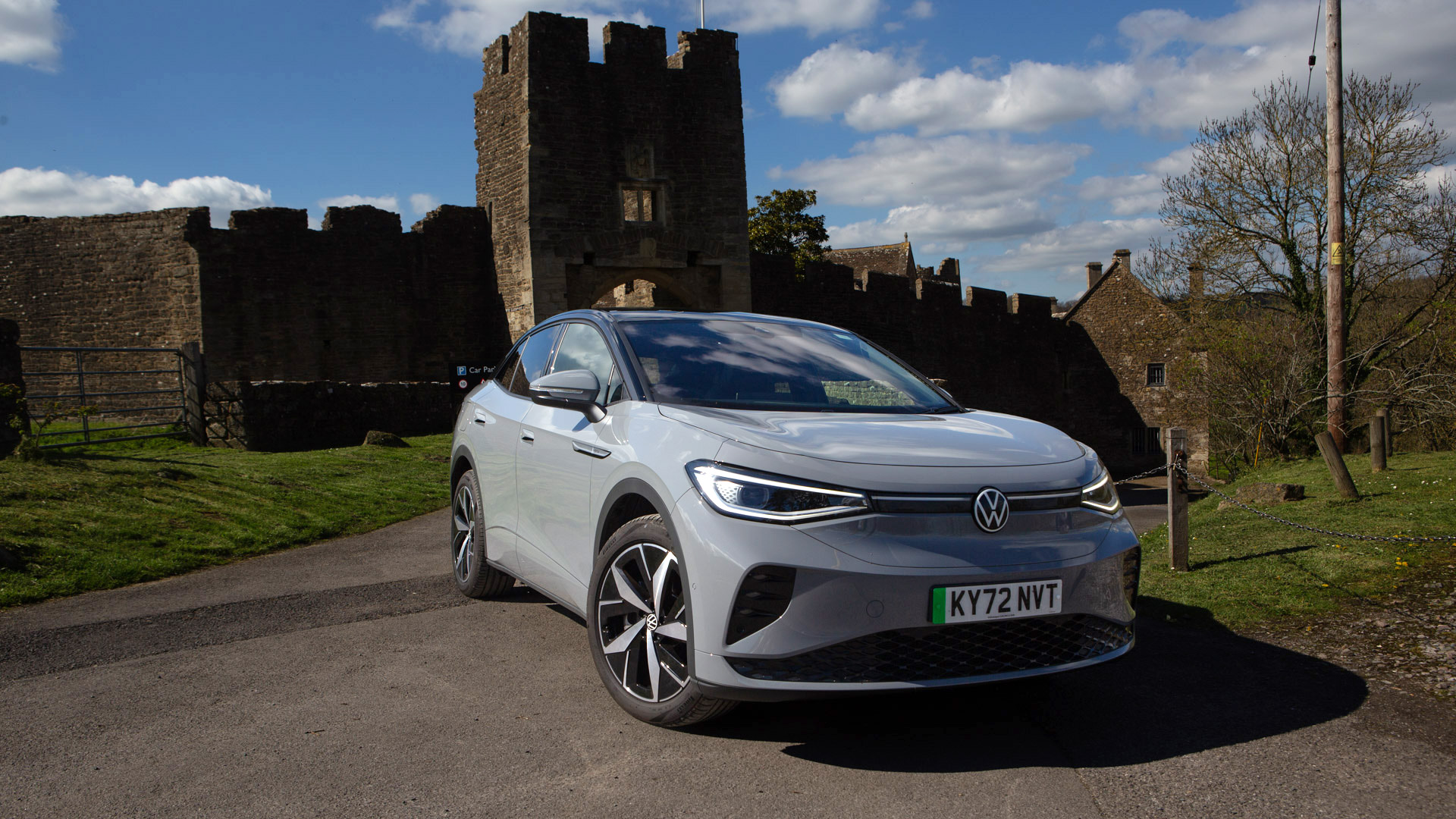
The ID.5 is a big car, rather than an SUV, but it still offers plenty of space for passengers and luggage. The GTX version adds a sportier edge to the model, but it's certainly no racer. Overall, a solid EV choice for families.
-
+
Lots of space
-
+
Good range of tech onboard
-
+
Easy adoption for those new to EVs
-
-
Lacks premium feel
-
-
Very similar to the ID.4
Why you can trust T3

The VW ID.5 is currently the largest car in its pure electric range – at least until the VW ID.7 launches later this year. While VW launched electric versions of the Golf and Up! It has now chosen to keep its electric line separate, with all models sporting the ID. prefix.
It’s an approach that most car manufacturers have used, with only BMW really bucking the trend, and certainly has positives and negatives. The positive is that these electric cars can be designed specifically for the electric platform – in this case, VW’s modular electric drive matrix (MEB) which is used across all ID. models. It also allows the body to be made more aerodynamic to reduce that drag. The downside is that drivers don’t have loyalty to these new models as they might have electric versions of ICE cars.
The closest ICE model to the ID.5 is probably the T-Roc, a mid-sized SUV that only joined the line-up in 2017. Interestingly VW doesn’t currently have EV equivalents of its larger Tiguan and Touareg SUVs and will only add its premium saloon equivalent to the Arteon (the ID.7) later this year.

Price and availability
VW’s ID.5 first launched in 2022, with the sportier GTX version joining the line-up at the same time. While the standard model starts from £50,710, the GTX demands a slightly higher £56,545. The ID.5 isn’t currently available in the US and is expected to come to Australia in 2024.
That’s a similar price to a Tesla Mode 3 in standard and performance models, though the Tesla does offer better range and acceleration. If you wanted something cheaper, the Hyundai Ioniq 5 and Kia EV6 offer a similar size. Meanwhile, the Audi Q4 e-tron is a fraction more expensive for quite a similar spec. The rather similar ID.4 – which offers a more traditional SUV rear – starts around £38,845 and goes up to £52,865 for the GTX model.
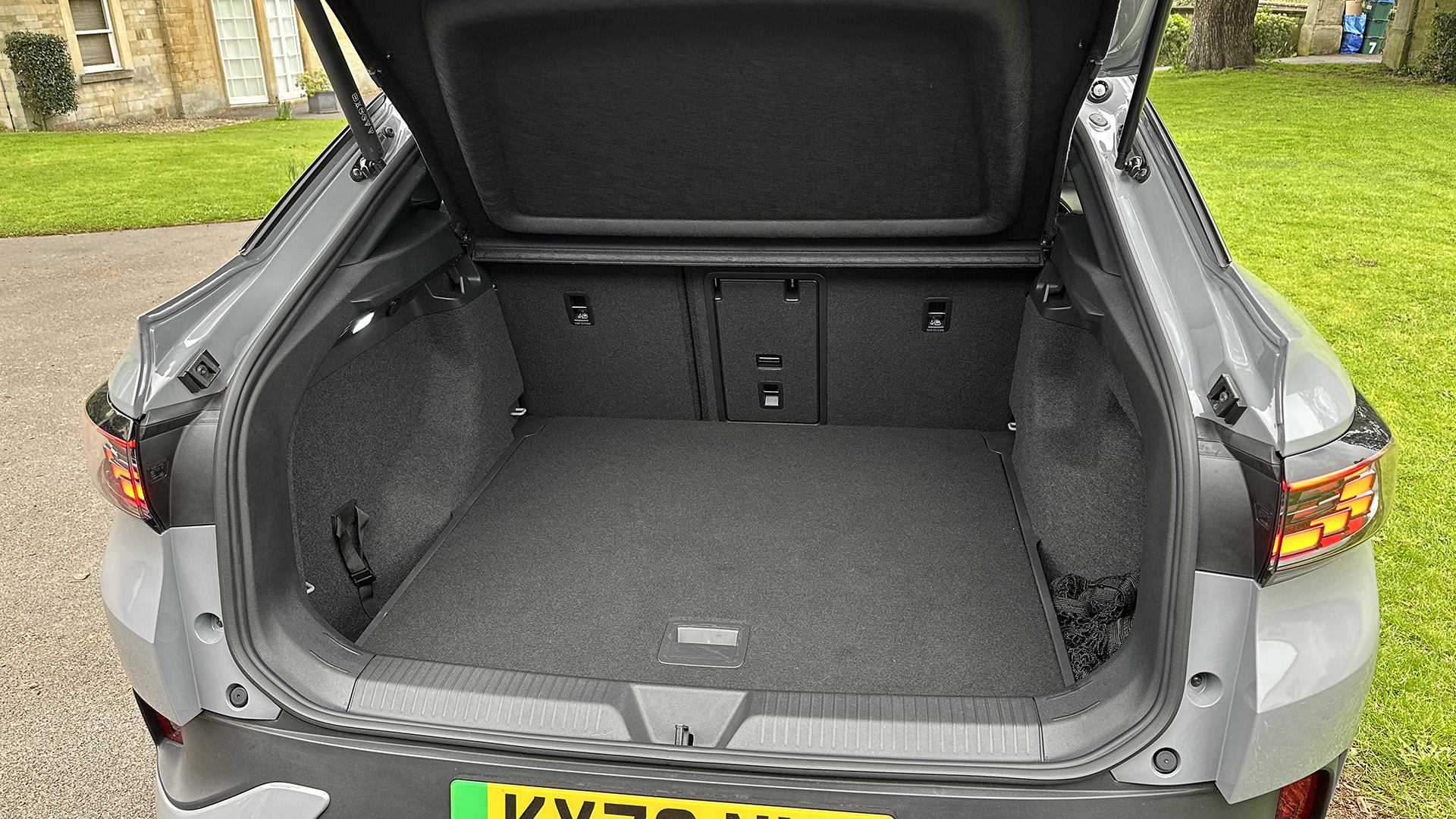
Design and features
Despite being classed as an SUV, the ID.5 has more traditional hatchback features – much like the Hyundai Ioniq 5 and Ford Mustang Mach-e. Described as an SUV coupé, It’s a look that is distinctly VW in the styling and will appeal to existing VW owners.
It’s a car big enough to fit an entire family of four, including luggage (though slightly less than the ID.4), without appearing overly big. It’s perhaps the Goldilocks of sizes really and is perhaps why VW has chosen this model as its current top offering.
Get all the latest news, reviews, deals and buying guides on gorgeous tech, home and active products from the T3 experts
The car sits on 20-inch alloys, with black wheel arches and large air intakes at the front. The two-tone paintwork leaves the top section black, with a choice of five colours on the body, the nicest being Moonstone Grey. Though there’s also an option of metallic black all over.
While the standard ID.5 offers a single rear-wheel-drive motor, delivering up to 204 mechanical horsepower (PS), the ID.5 GTX features dual motors to deliver all-wheel-drive and 299PS. That provides a 0-62mph of 6.3 seconds, which is hardly groundbreaking by EV standards but is nippy enough.
In terms of economy and range, the GTX has up to 314 miles from its 77kWh battery (around 4.07 miles per kW) while the standard ID.5 offers 327 miles (around 4.24 m/kW). That’s both a respectable range and a decent economy from the size of battery, thanks to the 0.26 drag coefficient of the car. Boxier SUVs struggle to reach this level.
The interior of the ID.5 GTX features the Sports Package Plus option, which includes springs, shock absorbers and stabilizers all tuned for a harder ride. The stitched leather steering GTX logo features the GTX badging, as does the upholstery.
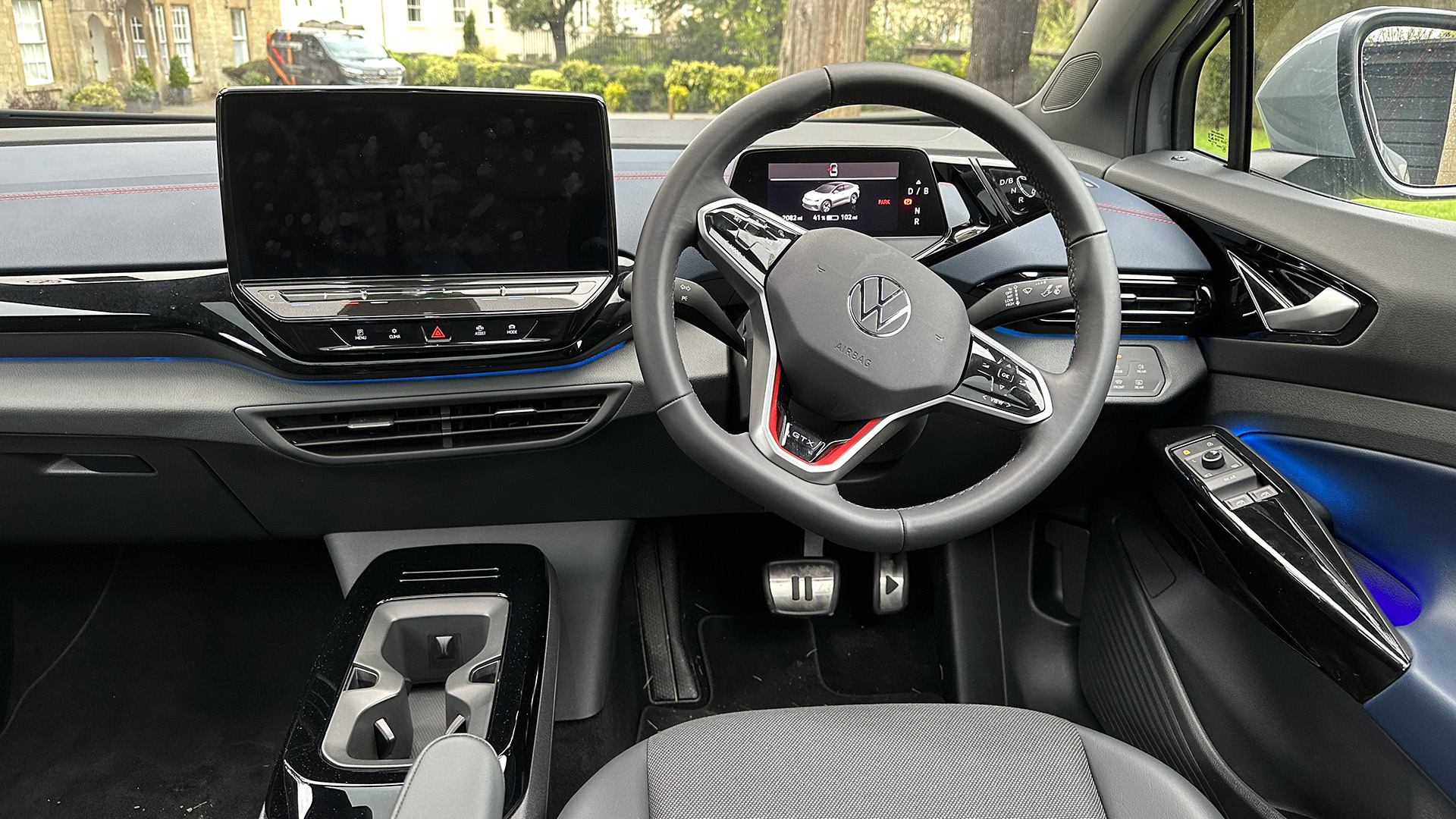
The tech
As you would expect from a premium electric car, there’s plenty of tech on board the VW ID.5, both inside and out. Starting with the exterior, it features IQ.Light as standard, which is made up of micro LEDs to provide a bright and clear view of the whole road using a main beam without dazzling other drivers. The daylight-running LEDs extend in a strip that joins the front headlights giving it a modern feel.
Inside, the ID.5 feature a 12-inch centre display and a smaller 5.3-inch display behind the wheel for your vehicle dynamics. This not only connects to Apple CarPlay and Android Auto but can log directly into your Apple Music or Spotify streaming service and stream through the car’s own data connection.
There’s also a head-up display that projects your speed and destination details from the car’s navigation into your line of vision. Augmented reality arrow displays even help to provide direction.
There’s a good selection of driver assistance on board too. The ID.5 includes adaptive cruise control, lane assist and the Park Assist Plus for automated parallel parking – and getting out of the spaces again.
It’s a solid set of features for any EV, though the main display feels like an after thought, stuck onto the dash, rather than integrated in the way that other models are. The touch sensitive buttons and screen surround also feel quite plasticky for a premium model such as this.
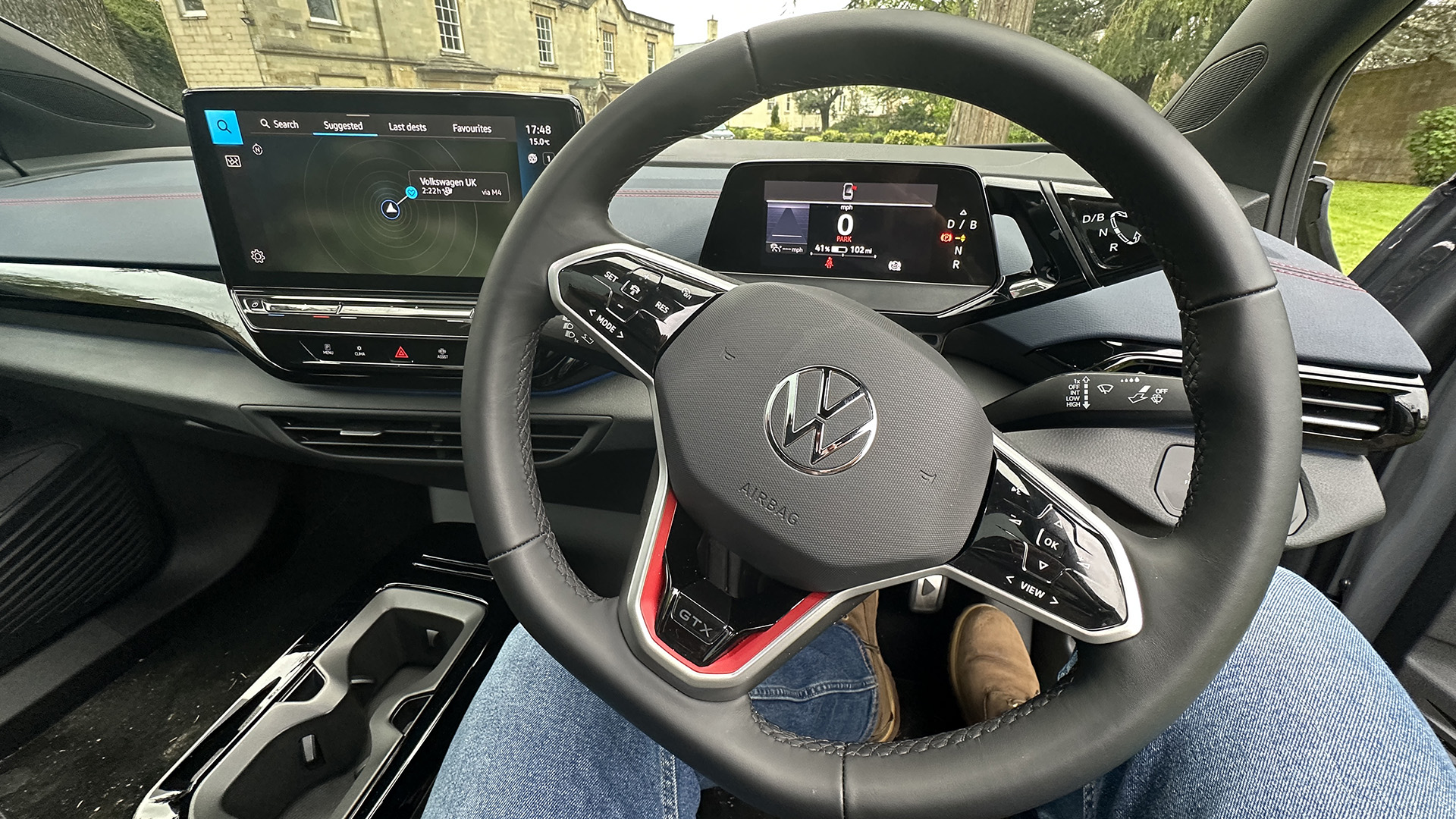
Performance and drive
Driving the ID.5 is a very pleasant experience. Being a mid-sized SUV it doesnt’ feel too big or unwieldy, nor does it feel small or underpowered. While it’s certainly not the fastest EV on the market, it has enough power to make it feel responsive and justify that GTX sports badge.
It’s a car that’s very easy to forget is electric, as it drives much like other Volkswagens – only completely silently. That’s a great thing for those making the move over to an electric car for the first time, as it won’t feel overwhelming. Perhaps the only adjustment would be to the strange positioning of the drive mode selector, which sits on the side of the driver display behind the wheel.
The range on the model I tested was 300 miles dead, which is slightly less than the standard GTX set up, but this still felt plenty for longer journeys. It does have a max DC charge of 135kW, so you won’t see the benefit of some of the really fast chargers, but right now in the UK, it’s rare to get much more than this out of most chargers anyway.
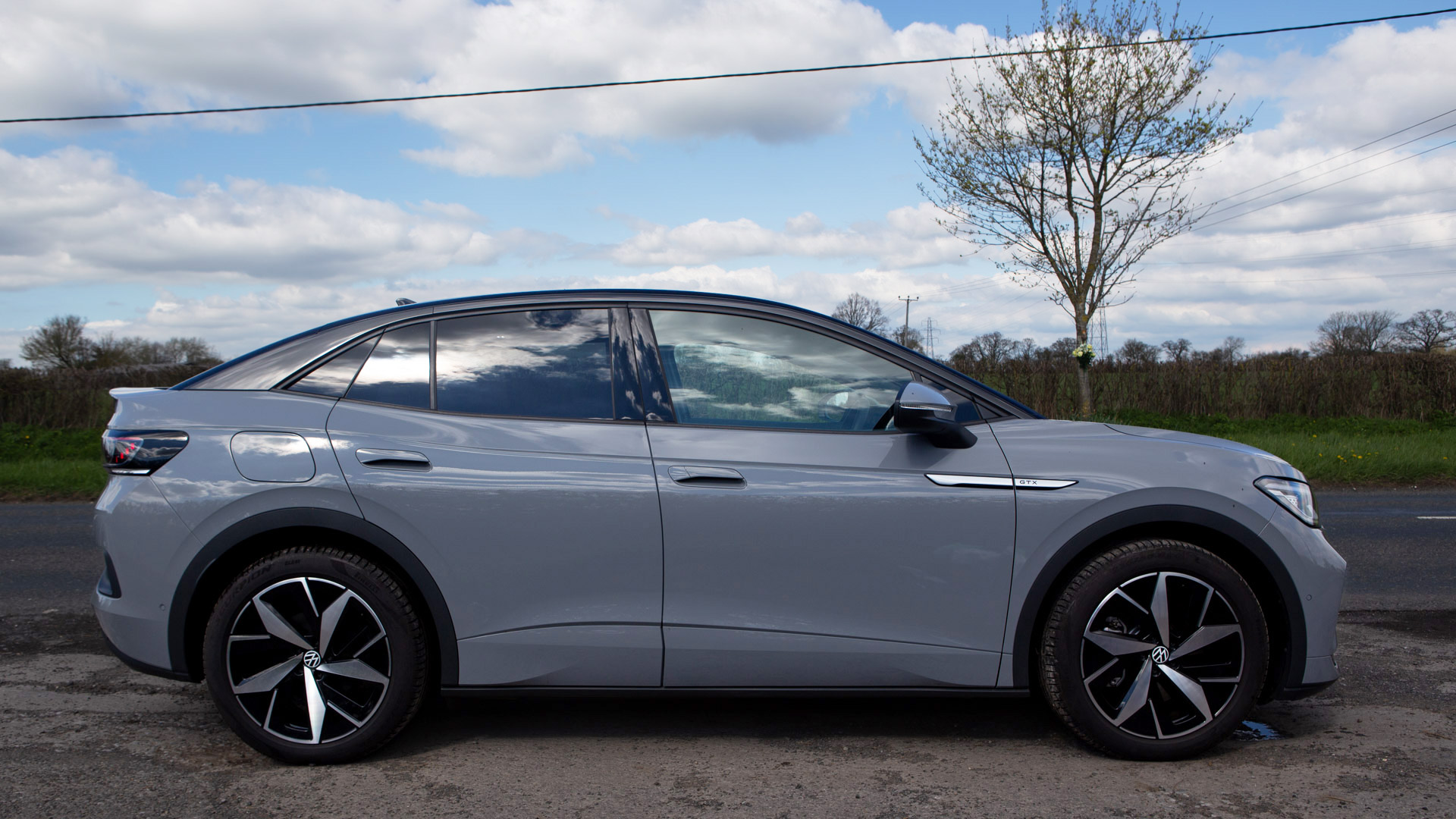
Should I buy the VW ID.5?
The VW ID.5 is a solid EV. It’s a car that feels like a safe choice for current VW owners, as well as anyone looking for a family sized car, without going to a full-on SUV. It’s a better looking car than the ID.4, though it does sacrifice some luggage space due to the coupe rear. That boot is still huge though, so this should be a problem for most buyers.
The slight downside is there’s nothing particularly exciting about the car. There’s nothing to really put your finger on as being something extra special, and that makes this a hard car to review. It’s not as tech-focused the Teslas, or as futuristic as the Hyundai or Kia models, and not as luxury as the Audi Q4.
In the same breath, there’s nothing it particularly does wrong and logically, it’s a great choice. I think what I’d like to see here is the GTX model offering more extreme performance, as the R models do for VW cars.

As T3's Editor-in-Chief, Mat Gallagher has his finger on the pulse for the latest advances in technology. He has written about technology since 2003 and after stints in Beijing, Hong Kong and Chicago is now based in the UK. He’s a true lover of gadgets, but especially anything that involves cameras, Apple, electric cars, musical instruments or travel.